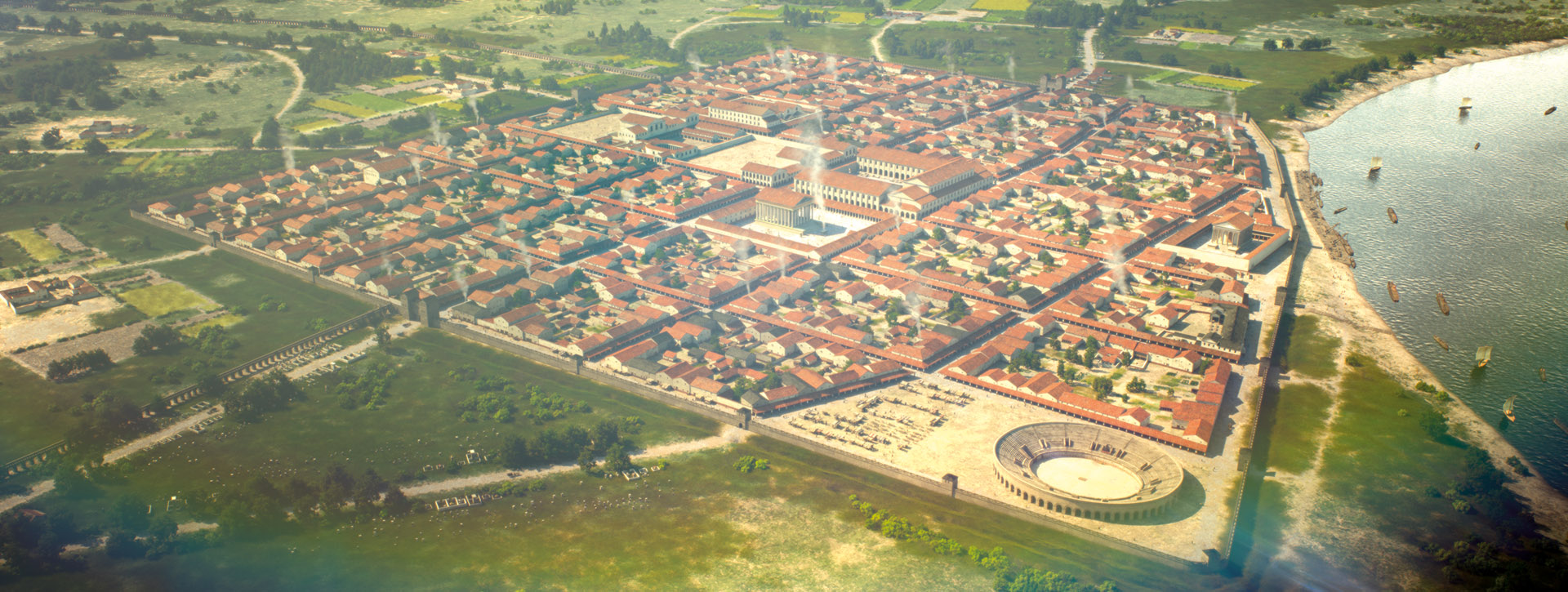The city's population
When the city was named a colonia, the residents were granted Roman citizenship. This included all legal and tax privileges. Where previously Germanic tribal law and then the legions had the say, a civil administration with public offices based on the Roman model now ruled. The population was multicultural: people of different origins, including Romans, Germanic tribes and Gauls, came together in Xanten. There was great linguistic diversity - Latin was not the only language spoken. Anyone who took part in the culture was a Roman. The situation was very similar for the soldiers in the nearby legion camp. Quite a few settled in the colonia with their families after leaving military service. Active soldiers also took part in everyday city life, not least in the construction of the large urban buildings.
The majority of the buildings, however, were simple residential houses. The ordinary people in the colonia lived mainly in so-called strip houses. They were typical of the settlements in the northwestern provinces. The houses were characterized by a long and narrow shape. Workshops and sales rooms were on the street, the living quarters were in the back of the house or on the first floor. Wealthier people could afford more elaborate wall paintings and floor coverings, underfloor heating, sculptures, precious furniture and expensive tableware in their houses.
A large part of the common population earned their living with manual work. Today, these residents can still be proven through tools and production remains. The finds suggest butchers, bakers, blacksmiths, bronze casters, locksmiths, painters and many other professions. In addition, there were all kinds of services and traders who offered goods from all over the empire. Everyday goods, as well as building materials and luxury items, were imported mainly via the port. The Rhine remained the lifeblood of the city. In the area surrounding the Colonia, agriculture was the most important branch of industry. Because the quality of the soil on the Lower Rhine was barely sufficient for profitable farming, the focus was on livestock farming. Countless bone finds testify to a good supply of meat.
The 30th Legion
In the 2nd century, the 30th Legion played an important role in the city's prosperity. Since 122 AD, it was located south of the Colonia on the Fürstenberg, where previous legions had already been stationed. For around two hundred years it remained the "house legion" of the Colonia. Today nothing remains of the camp, as it was destroyed in the Middle Ages by the relocation of the Rhine. Already in Roman times the Rhine changed its course and increasingly moved away from the Colonia. When the vital port gradually silted up, a new landing stage was built some distance outside the city walls. However, other developments soon emerged that posed a far greater threat to the prosperity of the Colonia than the capricious river.
Challenges and decline
In the 3rd century, internal turmoil and external threats shook the Roman Empire. This led to the Colonia being overrun and destroyed by the Franks. After the invasions, the city area was greatly reduced in size and fortified with sturdy masonry. The name of this fortification was probably Tricensimae. The older buildings outside the fortress were largely demolished. Finds from the 4th century suggest that urban life finally dried up during this period due to constant unrest.
Post-Roman era and Christianity
After the end of the Roman era, the Franks settled outside the old city in individual farmsteads and small villages. The Roman influences on their culture in the Xanten area can only be seen in the graves under the cathedral and in a few nearby villages. The Colonia area fell into disrepair and the stones were reused to build the medieval city of Xanten. The name "Xanten" is derived from "ad sanctos" ("to the saints") and refers to two early Christian martyr graves that were believed to have been found in the late Roman cemetery south of the Colonia site. Smaller memorial buildings were built over this burial ground as early as the 5th century. Later, in the 8th century, a church foundation was built. Half a millennium later, construction began on the Xanten Cathedral. Like many other buildings in the wider area, it consists largely of stones that the Romans once imported to Xanten for the construction of the Colonia.
